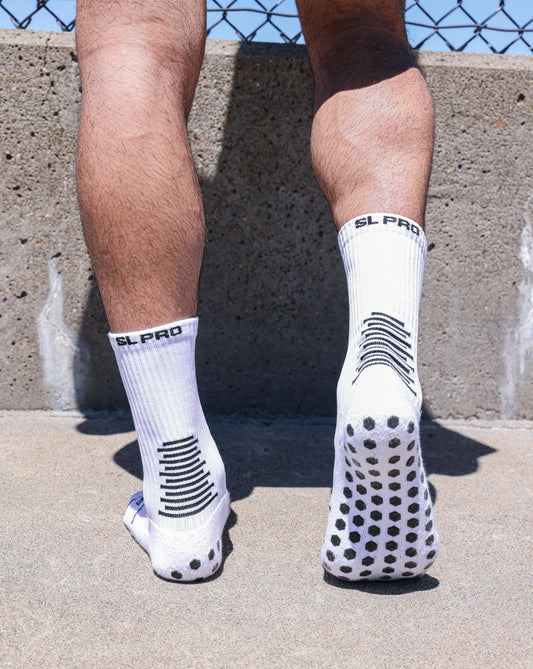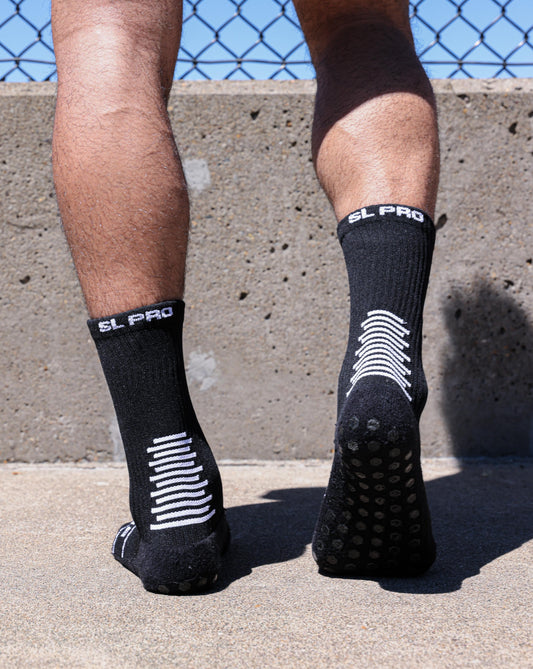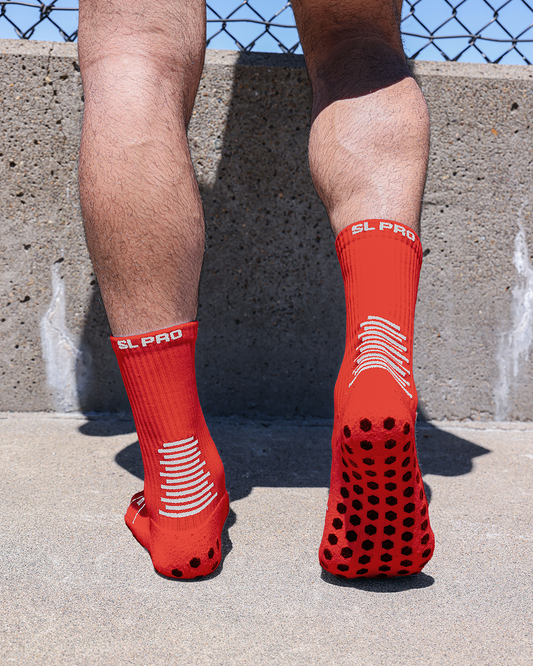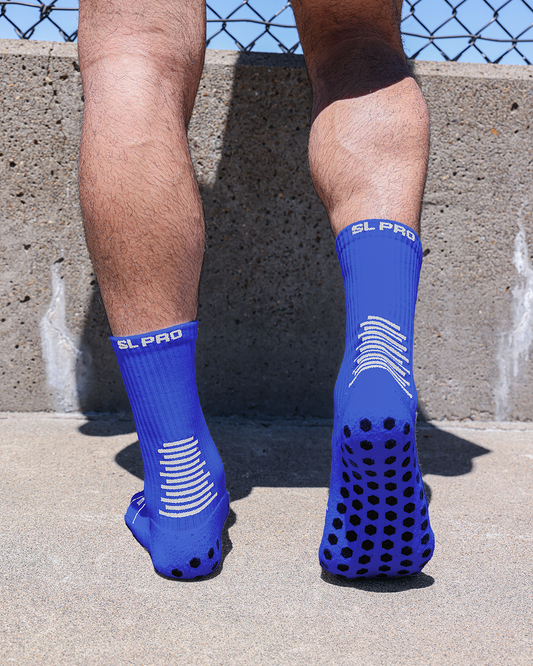Training on Turf? Why Soccer Players Are Switching to Grip Socks
If You're Training on Turf, You Need to Hear This…
Whether you're chasing a D1 scholarship, staying sharp in the off-season, or just getting extra reps on turf with your club, you know one thing: turf is not grass. The speed is different. The surface is slick. And your feet? If they’re sliding around in your cleats, your whole game suffers.
That’s why more and more soccer players, from elite pros to weekend warriors, are making the switch to grip socks.
So what’s the big deal about these high-tech socks? Are they really that different from your regular athletic socks? And most importantly, do they actually help on turf?
Let’s dive in.
The Turf Training Problem: Slippage, Strain, and Speed
Artificial turf has come a long way since the scratchy green carpet days, but it’s still not grass. The texture is smoother, and the lack of natural give puts different pressure on your joints. Because of this, foot slippage inside your cleats is a common (and frustrating) issue.
Here’s what that means in real terms:
- Slower cuts because you’re not locked into your shoes.
- Blisters and hotspots from micro-movements inside your cleats.
- Higher injury risk, especially for ankles and knees, because your foot isn’t stable.
Sound familiar?
What Are Grip Socks, Exactly?
Grip socks, also called performance socks or anti-slip socks, are designed with rubberized grips or traction pads on the sole (and sometimes the heel and toe). These grips create friction between your foot and the insole of your cleat, helping your feet stay planted when it matters most.
Think of them as the traction control system for your feet.
Many grip socks also offer:
- Compression zones for better blood flow and reduced fatigue
- Moisture-wicking fabric to keep feet dry
- Cushioned heels and toes for extra comfort
Why Soccer Players Are Making the Switch
Let’s get real for a second. If your feet are moving inside your boots during a sprint or a quick turn, you’re wasting energy. You’re losing control. And over time, you're putting yourself at risk.
Here’s why grip socks are becoming a staple for turf training:
1. Better Traction = Better Performance
On turf, every millisecond counts. Grip socks help players stick their turns, stop faster, and explode off the line without worrying about their foot sliding inside the shoe.
“I didn’t realize how much movement I had in my cleats until I tried grip socks. The difference was immediate.” – Colin, NCAA D2 Midfielder
2. Reduced Blisters and Hotspots
Ever feel that burning sensation after an intense training session? That’s often from your foot sliding inside your shoe, creating friction. Grip socks anchor your foot, reducing that movement and the resulting irritation.
3. Injury Prevention
Many players report feeling more stable when wearing grip socks, especially during lateral movements on turf. That extra stability means less strain on your ankles, knees, and hips.
“After I rolled my ankle twice on turf, my trainer recommended grip socks. I haven’t had a single tweak since.” – Sarah, Club Forward, U17
4. Confidence Boost
Let’s not underestimate this. When you feel locked in, you play locked in. Grip socks give players a mental edge, knowing that their gear won’t let them down when it’s time to go all out.
Turf vs. Grass: Why Grip Socks Make A Difference
On natural grass, cleats dig in and offer more friction between shoe and surface. But on turf, that natural grip just isn’t there. Add in sweat or moisture, and the inside of your cleat can turn into a slip 'n slide.
Grip socks are uniquely suited to fix this problem because they address the internal slippage, not just the cleat-to-ground grip. On both turf and grass, excess sweat will lead to internal slippage within the boot, making grip socks valuable in both applications.
This means:
- More power transfer with each step
- Quicker changes of direction
- Less wasted movement
In short, grip socks help close the performance gap on both turf and grass.
What to Look for in Turf-Ready Grip Socks
Not all grip socks are created equal. When you’re training on turf, here are a few features to look for:
✅ Multi-directional grips – You want grip pads on the heel, forefoot, and arch.
✅ Moisture control – Turf sessions = sweat. Look for breathable materials.
✅ No-slip cuff – Your sock shouldn’t move, either.
✅ Anatomical fit – Left/right foot-specific design for better comfort and performance.
✅ Durability – Turf grinds gear down faster. Look for reinforced stitching and toe protection.
Pro tip: Some players wear grip socks inside cut-off team socks for compliance with league kits. Double-layering works as long as the grip socks stay snug.
Are Grip Socks Worth It for Turf Training?
Let’s break it down:
- Price range: $20–$55 per pair depending on brand and features.
- Benefits: Reduced injury risk, improved performance, less foot fatigue.
- Lifespan: High-quality pairs can last a full season or more with proper care.
If you’re training regularly on turf, the answer is a pretty clear yes.
Think about how much you’ve already spent on cleats, recovery tools, gym sessions, and travel. Grip socks are a low-cost, high-impact upgrade that can give you an edge on a surface that demands precision and power.
Final Thoughts: Small Change, Big Impact
When you train on turf or grass, every detail matters. From the way your cleats fit to the quality of your recovery, it all adds up to how you perform when the whistle blows.
Grip socks might seem like a small change, but for thousands of players, they’ve made a big impact.
So if you're serious about elevating your game on turf, don’t overlook your socks. Grip up, lock in, and train like you mean it.
Want to try grip socks for yourself?
Check out SL PRO Grip Socks – designed by players, tested on turf.





